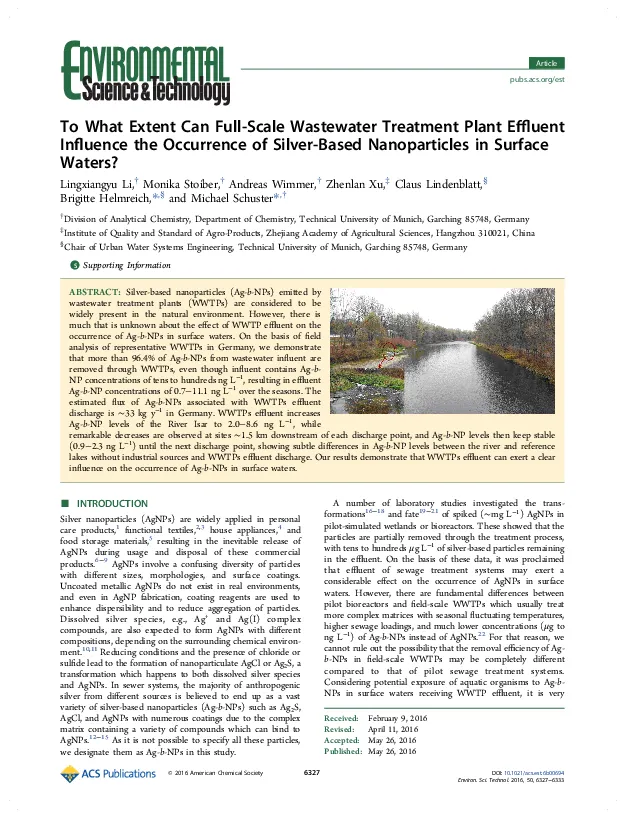Silver-based nanoparticles (Ag-b-NPs) emitted by wastewater treatment plants (WWTPs) are considered to be widely present in the natural environment. However, there is much that is unknown about the effect of WWTP effluent on the occurrence of Ag-b-NPs in surface waters. On the basis of field analysis of representative WWTPs in Germany, we demonstrate that more than 96.4% of Ag-b-NPs from wastewater influent are removed through WWTPs, even though influent contains Ag-b- NP concentrations of tens to hundreds ng L−1, resulting in effluent Ag-b-NP concentrations of 0.7−11.1 ng L−1 over the seasons. The estimated flux of Ag-b-NPs associated with WWTPs effluent discharge is ∼33 kg y−1 in Germany. WWTPs effluent increases Ag-b-NP levels of the River Isar to 2.0−8.6 ng L−1, while remarkable decreases are observed at sites ∼1.5 km downstream of each discharge point, and Ag-b-NP levels then keep stable (0.9−2.3 ng L−1) until the next discharge point, showing subtle differences in Ag-b-NP levels between the river and reference lakes without industrial sources and WWTPs effluent discharge. Our results demonstrate that WWTPs effluent can exert a clear influence on the occurrence of Ag-b-NPs in surface waters.
